Brown Sugar Glazed Salmon
This post may contain affiliate links. Please read our disclosure policy.
Brown Sugar Glazed Salmon is a super easy and delicious way to prepare this heart-healthy protein. A two-ingredient glaze keeps the salmon tender and infuses it with the most enticing sweet tang. This just may convince the salmon skeptic in your life to give it a try!
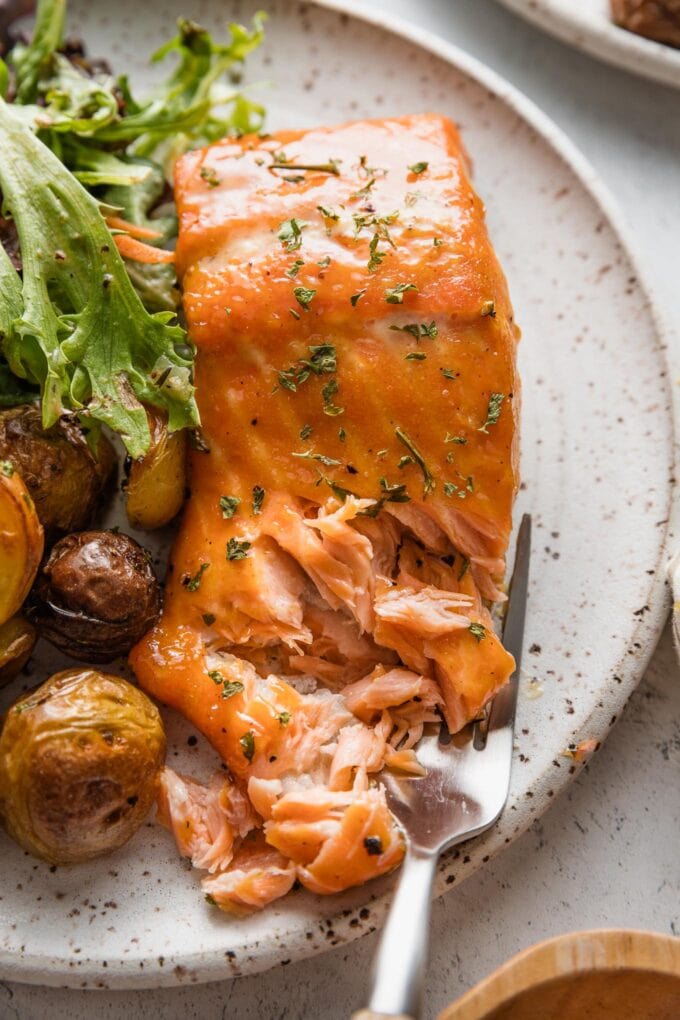
Salmon good enough to entice the skeptics!
My son reliably turns up his nose at salmon — which is too bad, because my daughter really likes it! When I first made this recipe, however, he nibbled a tiny bite and exclaimed: “This is really good, Mom!” After scraping my jaw off the table, I asked whether he thought he could manage eating it once or twice a year. He replied, “I’d eat this twice a month!” And I can’t think of a better review than that.
It’s little surprise that a sweet glaze is what does the trick. A spoonful of sugar makes the medicine go down, after all. In my book, that’s little price to pay for a dish this tasty, nutrient-dense, and ridiculously easy to prepare. I’d make this for a fancy meal as happily as I make it for family dinner.
Ingredient & Substitution Notes:
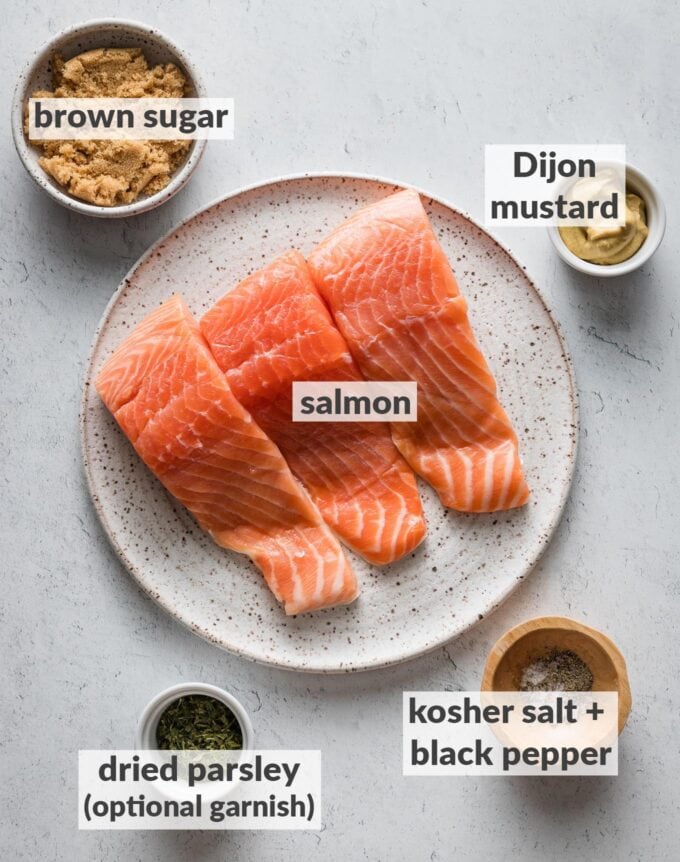
- Salmon. You can use either pre-cut fillets, as shown here, or a whole side of salmon, which bakes in about the same amount of time and makes for a really elegant presentation if that’s a factor.
- For the glaze: brown sugar and Dijon mustard. Two shortcuts that add up to huge flavor! Use light or dark brown sugar with ease. Brown sugar will make the glaze coating appear slightly darker due to its higher molasses content. For a smooth glaze, be sure to use Dijon mustard, as opposed to whole grain mustard. Both taste good, however.
- Kosher salt and black pepper. A pinch of each for extra seasoning.
- Parsley for an optional garnish. This just looks nice as a pop of green on top of the baked salmon. Dried or minced fresh Italian parsley works well.
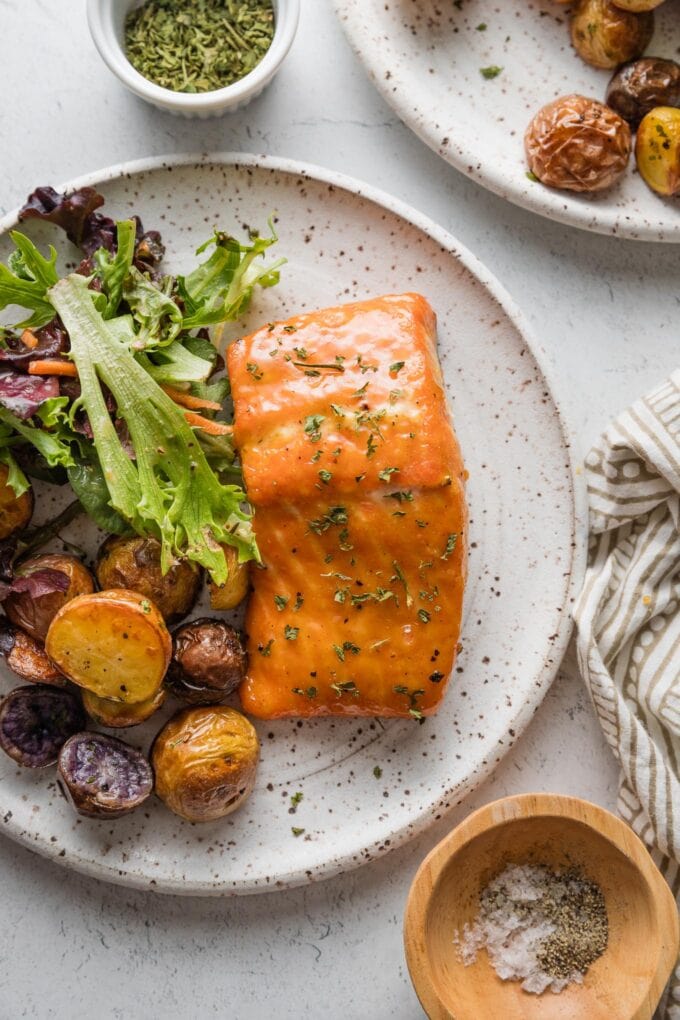
How To Make Brown Sugar Glazed Salmon:
Whisk together the glaze. Stir the brown sugar, Dijon mustard, and a generous pinch each of salt and pepper together into a thin, smooth mixture.
Coat the salmon. Arrange the salmon on a lined baking sheet; the glaze that runs off the salmon will be extremely sticky, so lining the pan with parchment or aluminum foil is a must. Brush the glaze generously over the top and sides of each salmon fillet. Use it all!
Bake. I like to roast salmon using a “cold start” method that I find extremely reliable. But if you prefer roasting at a different temperature or even sticking the salmon in the air fryer or on the grill, that is OK!
Know When Salmon is Done
There are several ways to tell when salmon is cooked through. Firstly, the color will change from translucent, raw red, to a more opaque pink. Another easy test is to press gently on the filet with a fork or your finger — cooked salmon will flake easily, meaning it separates along the white lines that criss-cross the filet. These lines are strips of fat.
Of course, the most foolproof test is the salmon’s temperature: the FDA recommends cooking salmon to an internal temperature of 145°F. However, many chefs prefer to cook salmon to medium — between 125°F and 135°F — for the flakiest, most tender result. Use an instant-read thermometer to empower yourself to make your own choice!
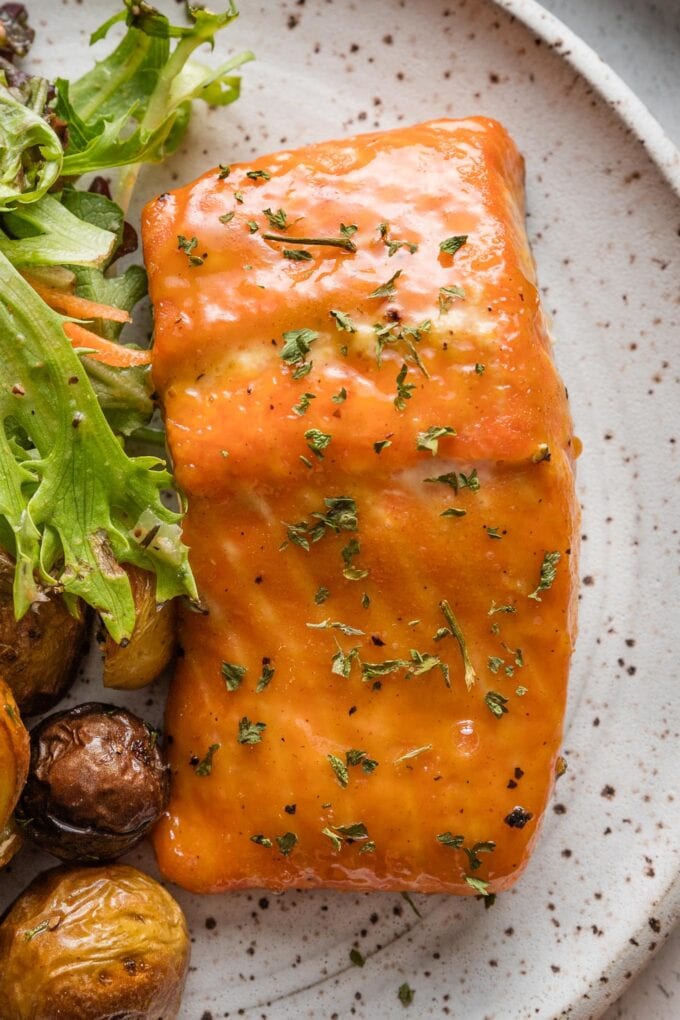
Serving Suggestions:
For a simple family dinner, pair this salmon with steamed green beans, peas, broccoli, roasted baby carrots, or a light salad. Round out plates with some bread or lemon butter orzo on the side. We also really like it with baby potatoes — either these roasted Parmesan herb potatoes, or simple mini creamers halved and tossed with olive oil, salt, and pepper.
For a more elegant dinner you might serve to company, roast a large side of salmon with this brown sugar glaze, then serve with a peach arugula prosciutto salad (in the summer) or a kale blueberry salad (in the winter). The fruit in either salad is a great natural complement to the sweet salmon glaze, but balanced out by the tart greens. Pick up the best crusty dinner rolls you can find and serve warm with butter to round out the meal.
Storage & Reheating:
- Store any leftover salmon in the refrigerator for up to 4 days. It’s even delicious to eat cold straight out of the fridge, on its own or in a salad.
- If reheating, warm in the microwave at 50% power. Using half-power warms salmon quickly but with less of the infamous “fish odor” and less chance of drying out.
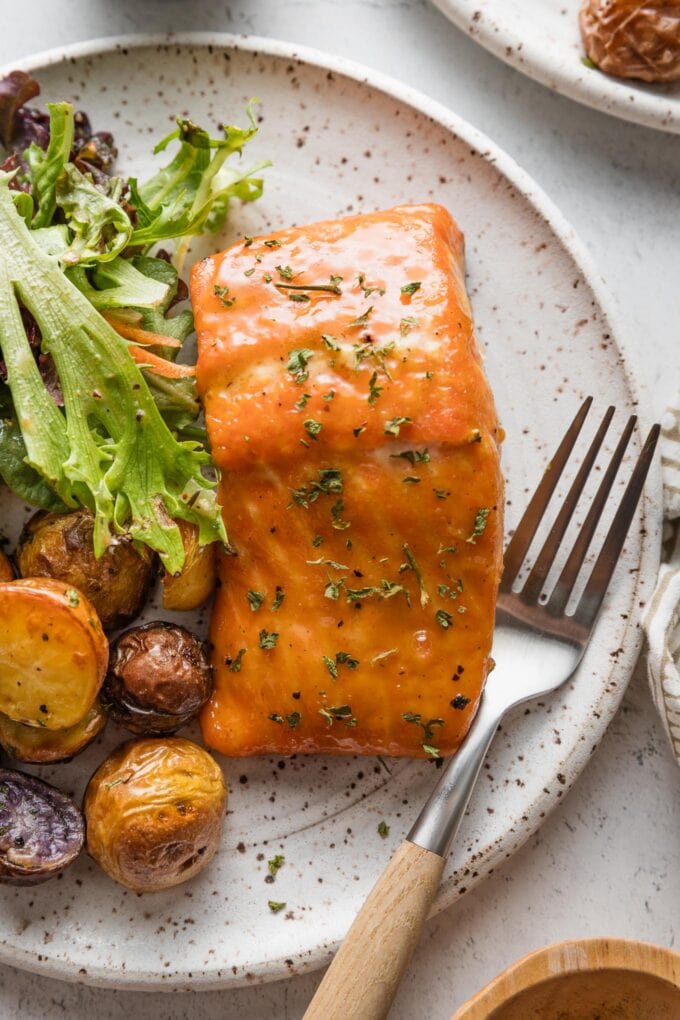
Related Recipes:
Salmon is one of my personal favorite proteins, as long as it’s tender! Favorite recipes for it include my Greek salmon salad, mustard-crusted panko salmon, pan-seared salmon with a pistachio crust, baked lemon herb salmon, or salmon pesto pasta.
If you try this Brown Sugar Glazed Salmon recipe, don’t forget to rate it and leave a comment below. I love hearing how recipes turn out in your kitchen, and it helps other readers, too.
You can also FOLLOW me on PINTEREST, INSTAGRAM, and FACEBOOK for more great recipes and ideas!
Brown Sugar Glazed Salmon
Ingredients
- 1/4 cup packed brown sugar light or dark
- 2 Tablespoons Dijon mustard
- kosher salt and black pepper
- 4 (5-6 ounce) salmon filets
- parsley dried or fresh, optional garnish
Instructions
- In a small bowl, combine the brown sugar, Dijon mustard, and a generous pinch each of salt and pepper. Stir into a smooth glaze.
- Line a rimmed baking sheet with parchment paper or aluminum foil, and set the salmon filets on top, skin-side down, if they have skin. Spread the glaze all over the top and sides of the salmon.
- Place the baking sheet in the cold oven. Close the door, then turn the oven on to 400 degrees F. Set a timer for 20 minutes.
- After 20 minutes, check the salmon. If it is done, it will flake easily when pressed with a fork, and have an internal temperature nearing 145 degrees F in the thickest part. Leave it for a few minutes if needed, but remove promptly when it hits 145 degrees.
- Sprinkle salmon with parsley, if desired, and serve right away.

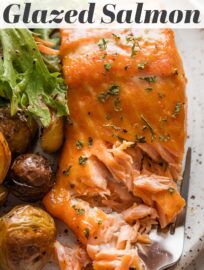
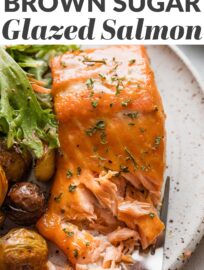

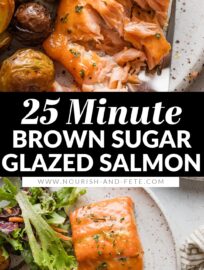
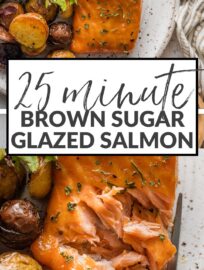
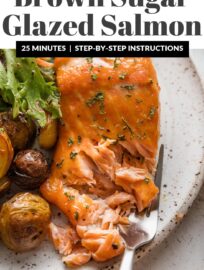
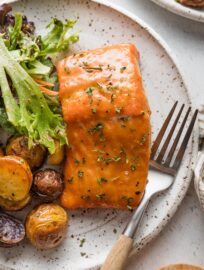
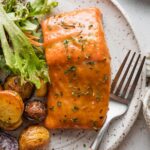
This has become one of my go-to quick, easy recipes to make! It never gets old and is delicious without fail.
Hi Anne- that means the world to me! Thank you so much!